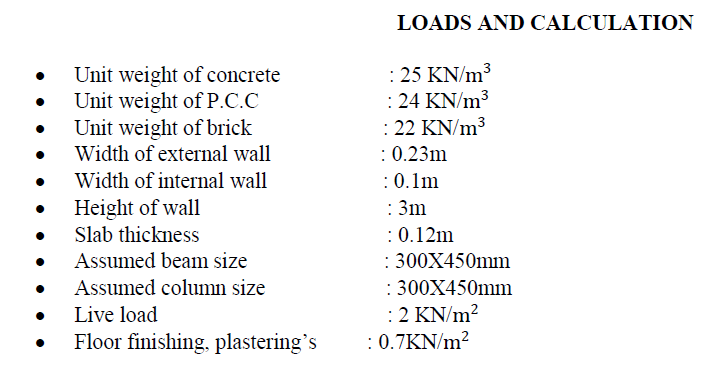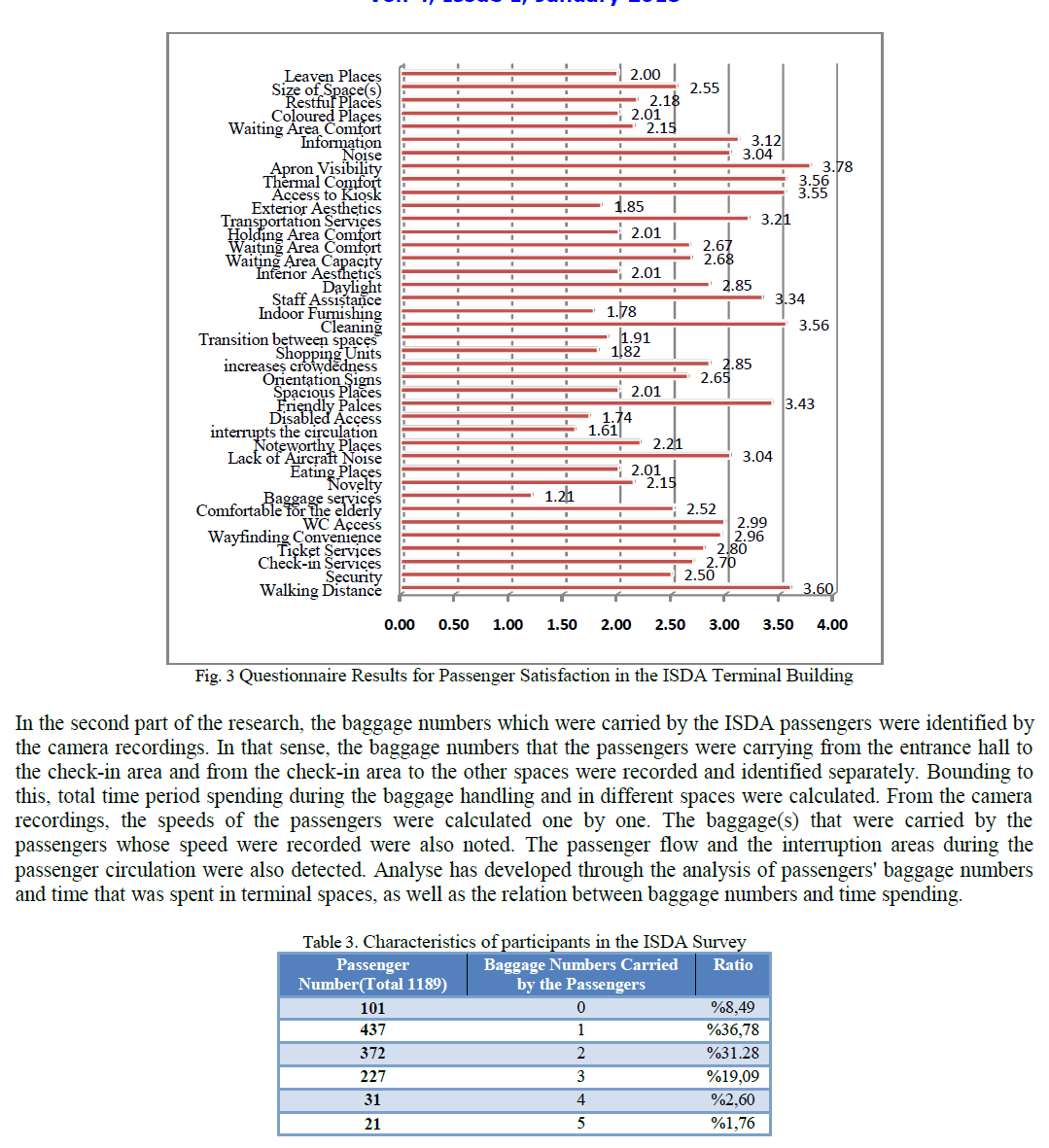ISSN ONLINE(2319-8753)PRINT(2347-6710)
ISSN ONLINE(2319-8753)PRINT(2347-6710)
B.K.Vimala1 , N.V.Divya2 , A.Pushpalatha3
|
| Related article at Pubmed, Scholar Google |
Visit for more related articles at International Journal of Innovative Research in Science, Engineering and Technology
One of the major project that the country facing is the rapidly growing population ,which necessities more facilities in the restricted availability of land this can be solved to a certain extent with the construction of multistoried building ,which can serve many people in a available limited area .Hence it is the necessary requirement of multistoried building with all facilities. Hence an attempt is made in the project and designing of multistoried building with ground floor+ four(G+4 framed structure) This multistoried building is constructed by using vaastu principal where ever possible for better ventilation and aesthetic conditions. In the multistoried building spacious corridors, staircases, rooms etc… are provided This proposed structure consists of the following features : FLOOR PURPOSE 1. Cellar :PARKING(60vehicles) 2. Stilt floor : Commercial complex 3. Ground floo r : Commercial complex 4. First floor : Two Bed Room Flats 5. Second floor : Two Bed Room Flats 6. Third floor : Two Bed Room Flats 7. Fourth floor : Two Bed Room Flats
Keywords |
| Beams, columns, footings, slabs, Structural Designing. |
INTRODUCTION |
| Industrial development in India in this decade has enormously increased the shift of population form village, towns to cites and hence this resulted in rapid urbanization. Due to this urbanization site value has also increased unboundedly, and people are going for multi stored flats to economically utilize the land area available. The multi stored apartments going importance not only in all cites but also in town ships. Every where a number of builders are going business on these apartment. Buyer of a flat had to just pay the fixed amount in fixed installments and he will become the owner of the flat within few months soon after he pay the total amount. This avoids the buyer the headache of the construction of his house. Hence the most people prefer the purchase of flats rather than to construct independent once. Viewing the demand for multi storied building, this project on stored apartments is an attempt to add to the design details. |
II. MATERIALS USED |
| 1 Aggregate: To be used in work should be hard ,durable and clean. The aggregate should be completely free from lumps of clay, organic and vegetable matter. Fine dust etc. the aggregate should be uniformly graded. |
| 2 Sand: It should have less silt container. It should salts, which attract moisture from atmosphere. |
| 3 Cement: Ordinary Portland cement having 43 grade can be used, 53 grade ordinary Portland cement develops crack in early stages and also after construction because of heat of evaluation. This 43 grade develops strength slowly. Ultimately it reaches the same strength as 53 grade. |
| 4 water : Water used should not have salts as it caused efflorescence. water available for potable purpose is only used in construction and during cursing purpose |
| 5 Steel: High yield strength of steel be used in construction such as fe415 gives good strength. |
III .PLANNING PRINCIPLES |
| For any project, planning is the pre-requisite and is most important phase. This provides the direction, unifying the framework to check the accuracy of work during its accusation and to explode the available recourses. It is not only the space constrain that is to be given due importance but also the structural stability’s, architectural view, noise pollination, sanitary problems proper ventilation etc. At place where the space is major constrain, efficient planning gives the desired benefits in the space available itself. The idea of placing various building for different requirement under the same roof will fulfill the aim of economic design The residential building needs to planned according to the kinds of occupation and particular category of buildings. No hard and fast rules for particular standers of accommodation can be laid down. However some desirable requirements are given |
IV. DESIGN OF SLABS |
| Slabs are plate elements froming floors and roofs of buildings. Inclined slabs may be used a ramps for multi-storey car parks. A slab may be supported by beams or by wall and may be used as the flanges of T/L beams. Further a slab may be simply supported if continuous over one more supports and is classified according to the method of support The provision of IS:456-2000.clause no.23.2 for beamappled to slabs also.For Spanning in two directions. The shorter of the two spans should be used for calculating the span to effective depth ratios. |
| For two-way slabs of small spans (up to 3.5m )with M.S. bars,the span to overall depth ratios given may be generally assumed to satisfy deflection limits for loading class up to 3000N/m. |
| For Fe 415 steel the values given above should be multiplied by 0.8. |
| a) One way slabs spanning in one direction. |
| b) Two way slabs spanning in two directions. |
| c) Circular slabs. |
| d) Flat slabs resisting directly on columns with no beams. |
| e) Grid floors and ribbed slabs. |
| Slabs are designed by using the same theories of bending and shear as are used for beams. The following methods are available for analysis: |
| a) Elastic analysis |
| b) Semi empirical co-efficient. |
| c) Yield line theory. |
| If the cross sectional area the three basic structural elements, beam, slab and column are related to the amount of steel provided, it will be said that the percent steel usually maximum in a column than in a beam and least in the slab. The distancebetween a beam and the least in the slab. The distance between and a slab can be made as follows… |
| 1. Slabs are analyzed and design as having a unit width that is one meter wide strips. |
| 1. Slabs are analyzed and design as having a unit width that is one meter wide strips. |
| 3. Shear stresses are usually very low and shear reinforcement never provide in slab. It is preferred that to increase the depth of slabs and hence ton decrease he shear stresses. |
| 4. Temperature reinforcement is in variably provided right angles to the main longitudinal reinforcement in a slab. |
| 5. Slabs are usually much thinner than beams. |
 |
 |
V.DESIGN OF BEAMS |
| A reinforced concrete beam should be able to resist tensile, compressive and shear stresses as induced in it by the loads on the beam. Concrete beams are thus limited in carrying capacity by the low tensile strength. Steel very strong in tension, thus the tensile weakness of concrete is overcome by the provision of reinforcement in tension zone to make a reinforced concrete beam. |
| ïÿýïÿýïÿýïÿýïÿýïÿýïÿýïÿýïÿýïÿý of the given section is calculated and is compared with the maximum bending moment of the section. If ïÿýïÿýïÿýïÿýïÿýïÿýïÿýïÿýïÿýïÿý less thanïÿýïÿýïÿýïÿý , the section is designed as a doubly reinforced section. ïÿýïÿýïÿýïÿý /ïÿýïÿýïÿýïÿý2 is calculated and percentage of steel is required in tension and compression corresponding to grade of steel are obtained from SP 16-1980. |
| Reinforcement required for bending and sheaf in beams is calculated in accordance with the provision laid down in clauses 26.5, 40.1 and 40.3 of IS456-2000. |
| There are three types of reinforced concrete beams. |
| a) Singly reinforced beams. |
| b) Doubly reinforced beams. |
 |
VI.DESIGN OF COLUMNS |
| Column or s strut is a compression member, the effective length of which Exceeds three times the least lateral dimensional compression member subjected to pure axial load rarely occurs in practice. All columns are subjected to some moment , which may be due to accidental eccentricity or due to end restraint imposed by monolithically placed beams or slabs. The strength of column depends on the strength of the material , shape and size of the cross section, length and degree of positional and directional resistance at its end. column may be classified as based on the different criteria, such as: |
| a) Shape of cross section |
| b) Slenderness ratio |
| c) Types of loadings |
| d) Pattern of lateral reinforcement |
| A column may be rectangular , square , circular or polygon in cross section The code specifies certain minimum reinforcing bars depending on its effective slenderness ratio (k=l/r). the ratio of effective column length to least lateral dimension us referred to as effective slenderness ratio. A shorter column has a maximum slenderness ratio of 12. Its design is based on the strength of the materials and the applied loads .a long column has a slenderness ratio greater than 12. It is designed to resist the applied loads plus additional bending moments induced due to its tendency to buckle. A column may be classifies as follows based on the types of loading. |
| Axially loaded column |
| a) A column subjected axial load and unit-axial bending |
| b) A column subjected axial load bi-axial bending |
VII.DESIGN OF FOOTINGS |
| Foundations are structural elements that transfer loads from the buildings or individual columns to earth. If these loads are to be properly transmitted, foundations must be designed to prevent excessive settlement and to provide adequate safety against sliding and overturning. Most foundations are classified as fallows |
| 1) Isolated footings under individual columns. These may be square, rectangular or circular in plan. |
| 2) Strip foundations and wall footings. |
| 3) Combined footings supporting two or more column loads. These may be rectangular or trapezoidal in plan or they may be isolated bases joined by a beam. The latter case is referred to as a strap footing. |
| 4) A raft or mat foundation is large continuous foundations supporting all the columns of structure. This is normally used when soil condition is poor or differential settlements are to be avoided. |
| 5) In pile cap are used to tie group of piles together. These may support isolated columns, or group of several columns or load bearing walls |
| The choice of the type of foundations to be used in a given situation depends on a number of factors, for examples, |
| a) Soil strata, |
| b) Bearing capacity and standard penetration test value “n’’ of soil, |
| c) Type of structure, |
| d) Type of loads |
| e) Permissible differential settlement, and |
| f) Economy. |
VIII. DESIGN OF STAIR CASE |
| The purpose of stair case is to provide pedestrian access to different levels with in a building. The geometrical forms of staircases may be quite different depending on the individual circumstances involved. The two main components of a stair case are stairs and landing slab. The stairs and landings slab can be arranged in different forms together in different types of staircases |
| 1) Type of construction of the structure around the staircase i.e., load bearing brick structure or reinforced concrete frame structure. |
| 2) Availability of space. |
| Rise and tread are two associated with a stair. The term rise refers to the vertical height of step and the term represents the horizontal dimensions where our floor placed. |
GENERAL RULES |
| 1) Between consecutive floors there should be an equal rise for every parallel step. Similarly there should be equal thread. |
| 2) The sum of tread of single step, twice the rise should be in 550mm and 700mm. |
| 3) The rise of the step should not be more than 200mm and tread should not be less than 240mm. |
| 4) |
IX . BASE ISOLATION TECHNIQUES |
| Base Isolation Technique is the process of de-coupling a sub-structure and a super-structure by various techniques. |
| o Additional Benefits of Isolation |
| ïÃâç Protection of Building Frame |
| ïÃâç Protection of Life – Current Code |
| ïÃâç Protection of Non-Structural Components and Contents |
| ïÃâç Protection of Processes and Function |
| ïÃâç Provide for an operational facility after the earthquake |
 |
| Figure 2 shows the base isolation techniques used in under foundation ,on foundation , at basement column ,at middle story column. |
X. CONCLUSION |
 |
| In the present study G+4 building at Anantapur , gooty road, India is designed (Slabs, Beams, Columns and Footings) using Auto CAD software. The loads are calculated namely the dead loads which depend on the unit weight of the materials used (concrete, brick) and the live loads using the code IS:456-2000 and HYSD BARS FE415 as per IS:1786- 1985.The safety of G+4 reinforced concrete building will depend upon the initial architectural and structural configuration of the total building, the quality of the structural analysis, design and reinforcement detailing of the building frame to achieve stability of elements and their ductile performance. Proper quality of construction and stability of the infill walls and partitions are additional safety requirements of the structure as a whole. The detailed plan of the building is given in Fig.3 |
References |
|